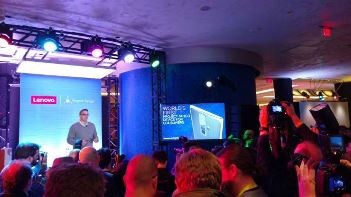Lenovo and Google have announced their partnership to produce the first smartphone using three-dimensional mapping developed for the U.S. tech giant's "Project Tango," as reported by phys.org.
According to the report, the announcement of the partnership was made on the sidelines of the Consumer Electronics Show in Las Vegas on Thursday, Jan. 7. The partnership is expected to produce the first consumer device using the Tango technology, which aims to create a new generation of smart devices that can be used for indoor mapping, augmented reality and other functions.
The two companies said that the planned smartphone device would have a large screen with a display of around six inches (15 centimeters) and will cost under $500.
The Tango phone is set for worldwide release in mid-year, which will mark the first major entry of the Chinese electronics giant into the U.S. smartphone market.
"This was not designed as a niche device," Lenovo vice president Jeff Meredith said. "We want this to be accessible to a large audience."
In 2014, Google announced its research project aimed at broadening the potential for smartphone technology in a three-dimensional world.
But until now, the only device using the Tango technology was a bulky tablet made by Google for developers, the report said.
Project Tango leader Johnny Lee said during the announcement in Las Vegas that the technology "transforms the smartphone into a magical window on the world."
Lee, who demonstrated various uses of the technology, said the Tango smartphone could help consumers find their way in a large hotel or mall, or take precise measurements of a room before shopping for furnishings.
Lee showed the media how to get instant measurements of ceiling height, square footage and more, and then also tested how furniture pieces would look in a room.
According to the report, Project Tango uses depth sensing and motion tracking to create on-screen 3D experiences, which enables users to get a better picture of a physical environment. But unlike GPS, Project Tango motion tracking works indoors, and allow users to navigate in a shopping mall, or even find a specific item at the store.
"There is much more in the space around us that we can see with our eyes," Lee added.
On the other hand, Meredith said that several designs for the device were still being tested by Lenovo. He said that the company would "definitely" launch the device in mid-2016.
An "app incubator program" will also be launched to encourage developers to produce new applications for the ecosystem, the companies added.



























